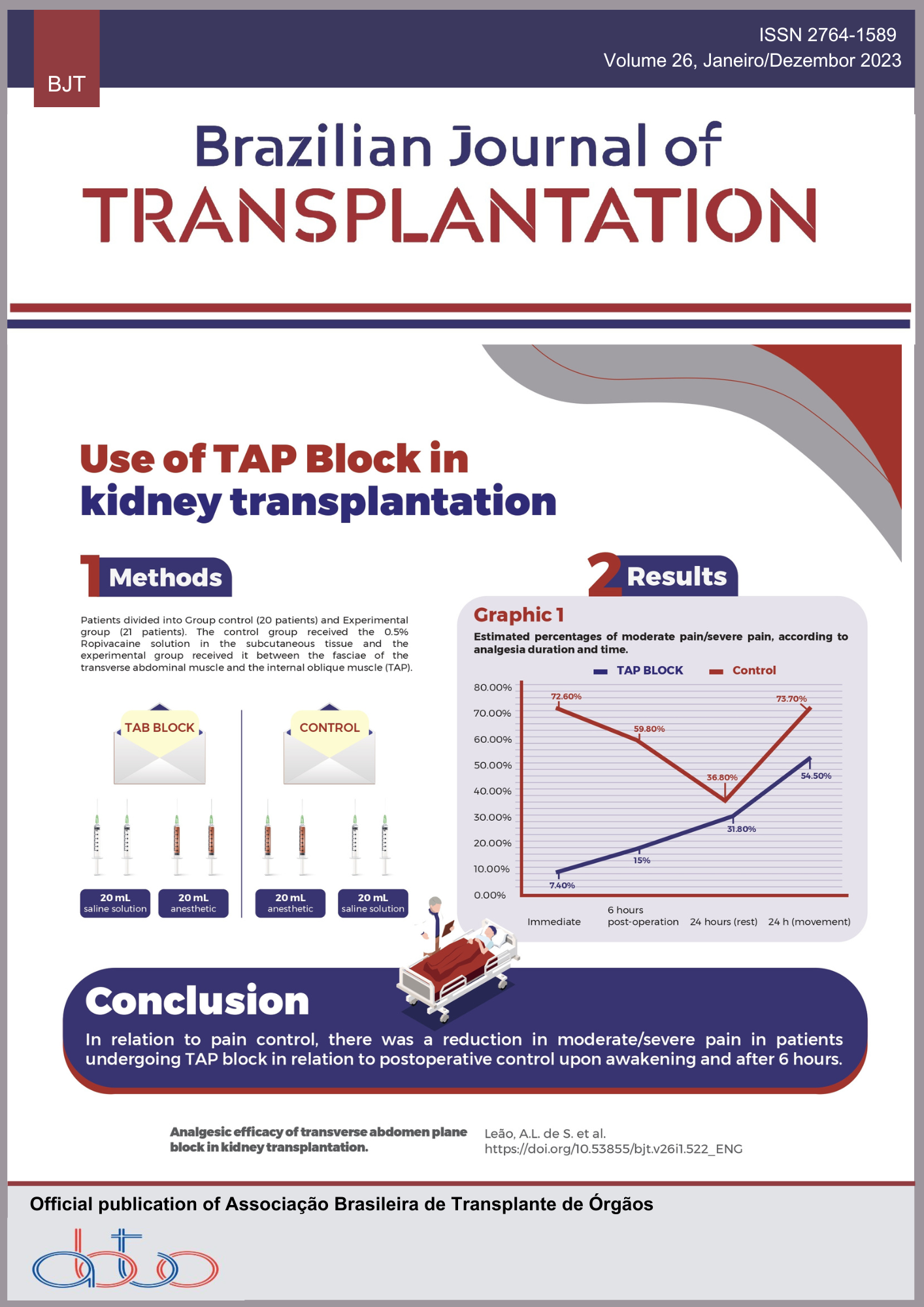Monkeypox in Liver Transplant Patient
Keywords:
Monkeypox, Liver transplantation, PostoperativeAbstract
Monkeypox (MKP) is a zoonosis caused by a DNA virus belonging to the Orthopoxvirus genus in the Poxviridae family and was isolated for the first time in Denmark, in 1958. In 1970, the first case in humans was described in the Democratic Republic of Congo and, since then, it has spread with inter-human dissemination and, in July 2022, the WHO declared a state of health emergency. Its clinical presentation is similar to that of smallpox, with skin eruptions that evolve as macules, papules, vesicles, pustules and crusts. The first case in a transplanted patient was described in Thailand, in June 2022, in a bone marrow transplanted patient. In this report, we describe the case of MKP in a patient in the postoperative period of liver transplantation. We also discuss clinical aspects of this situation, which is still little known among the transplanter community.
Downloads
Downloads
Published
Versions
- 2023-07-10 (2)
- 2023-07-05 (1)
How to Cite
Issue
Section
License
Copyright (c) 2023 Tércio Genzini , Thais Natália de Almeida, Marina Guitton Rodrigues, Sabrina Rodrigues de Figueiredo, Maira Andrade Nacimbem Marzinotto , Luís Edmundo Pinto da Fonseca, Raquel Silveira Bello Stucchi, Tomas Navarro Rodriguez , Regina Gomes dos Santos, Marcelo Perosa

This work is licensed under a Creative Commons Attribution 4.0 International License.









